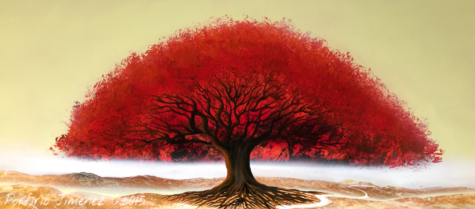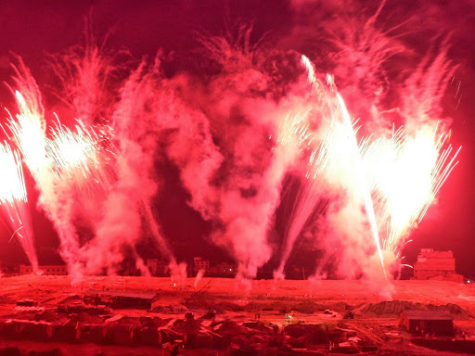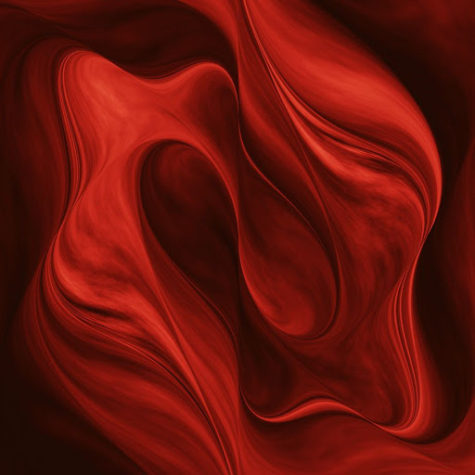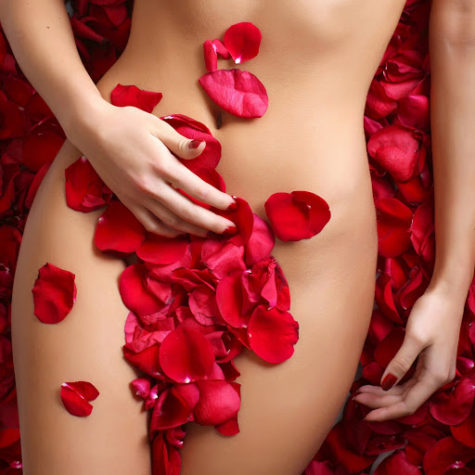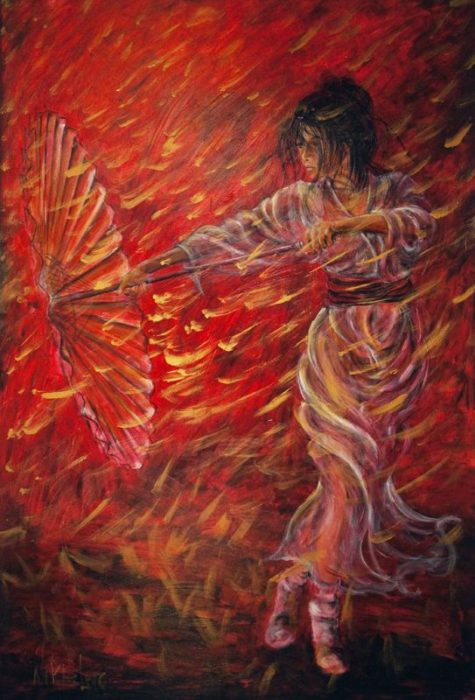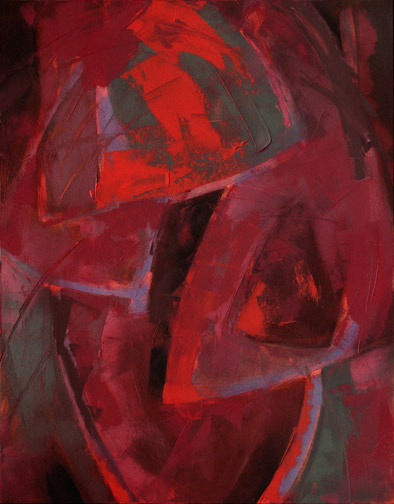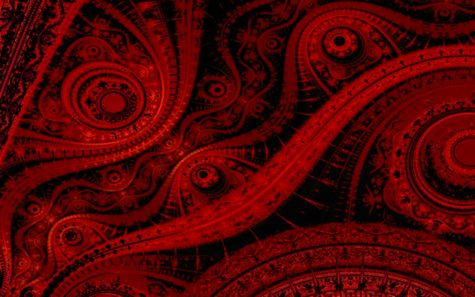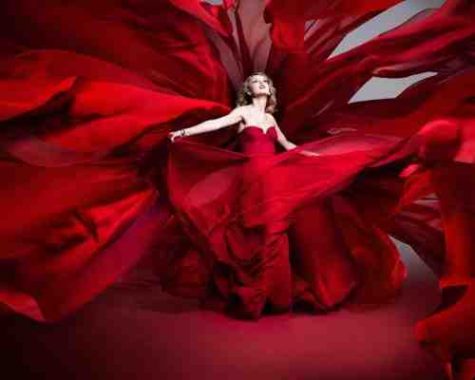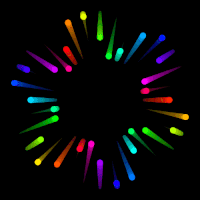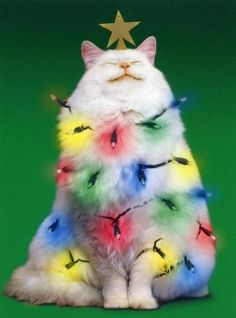Red
Why Red Is Such A Potent Color
Why is the color red so impressive? The answer lies in our tree-living past.
In the back of the vertebrate eyeball are two kinds of cells called rods and cones that respond to light. Cones take in a wide range of light, which means they recognize colors, and they are stimulated best during daylight. Rods respond to a narrower range of light (meaning only white light) but notice that light from far away and at night.
Isaac Newton was the first person to hold up a prism and refract white light into a rainbow of colors and realize that their might be variation in what the eye can see. Color comes at us in electromagnetic waves. When the wavelength of light is short we perceive purple or blue. Medium wavelengths of lights tickle the cones in an other way and we think green. Short light wavelengths make those cones stand up and dance as bright spots of yellow, orange and red.
Various animals distinguish only parts of that rainbow because their cones respond in different ways. Butterflies, for example, see into the ultraviolet end of the rainbow which allows them to see their own complex markings better than we can. Foxes and owls are basically color blind and it doesn’t matter because they are awake at night when the light spectrum is limited anyway.
Humans are lucky enough to be primates, animals with decent color vision, and we can thank monkeys for this special ability.
Long ago, primitive primates that resemble today’s lemurs and lorises saw only green and blue, the longer wavelengths of color. But when moneys evolved, around 34 million years ago, their cones became sensitive to even shorter wavelengths of color and they saw red.
And what a difference. With red, the forest comes alive. Instead of a blanket of bluish-green leaves, the world is suddenly accented with ripe red, yellow, and orange fruits, and even the leaves look different.
For a monkey leaping through the forest canopy, color vision would be an essential advantage. Unripe fruit doesn’t have enough carbs to sustain a hungry primate and they taste really sour. Unripe leaves not only taste bad, they are toxic and indigestible.
For the first humans foraging about the forest and savannah around 5 million years ago, it would have been be much more efficient to spot a ripe fruit or tuber than bite into a zillion just to get the right one. And so humans ended up with color vision even though we no longer live in trees.
But color is more than wavelengths, more than an indicator of ripeness, to us. Color has become symbolic, meaning it has meaning, and that meaning is highly cultural.
Chinese athletes and Chinese brides wear red because red is considered lucky. The U.S. athletes also wear red because that bright color is in the U.S. flag, and because designers of athletic wear, as well as scientists, know that red gets you noticed.
Living Red
Instinctively, the occurrence of red makes us wary, as we connect it with heat and the potential danger of burning. Red lights are built into artificial fires to help simulate the coziness of a real fire. Too much heat and red burns, but at the right level it supports our lives and gives us comfort.
Being the color of blood, red has symbolic links with living and life. Spilling or losing blood brings illness and death. Wearing red, eating red foods and surrounding yourself with red increases the body’s ability to absorb iron, the metal that is responsible for the color of hemoglobin in the blood. The presence of hemoglobin allows the blood to absorb oxygen in the lungs and to transport that life-giving oxygen to the cells of the body.
Physical activity and the energy that that supports it also has a red vibration. If speed, danger, daring or courage are involved, the red quality of the activity increases. Mountaineers, racing car drivers, and stuntmen all have “red” careers.
Source unknown
Red – What is it?
Red is any of a number of similar colors evoked by light consisting predominantly of the longest wavelengths of light discernible by the human eye, in the wavelength range of roughly 625-740 nm. Longer wavelengths than this are called infrared, or below red and cannot be seen by the naked human eye. Red is used as one of the additive primary colors of light, complementary to cyan, in RGB color systems. Red is also one of the subtractive primary colors of RYB color space but not CMYK color space.
Red’s wavelength has been an important factor in laser technologies as red lasers, used in early compact disc technologies, are being replaced by blue lasers, as red’s longer wavelength causes the laser’s recordings to take up more space on the disc than blue lasers.[10] Red light is also used to preserve night vision in low-light or night-time situations, as the rod cells in the human eye aren’t sensitive to red. Red is used as one of the additive primary colors of light, complementary to cyan, in RGB color systems. Red is also one of the subtractive primary colors of RYB color space but not CMYK color space.
One common use of red as an additive primary color is in the RGB color model. Because “red” is not by itself standardized, color mixtures based on red are not exact specifications of color either. In order to produce exact colors the color red needs to be defined in terms of an absolute color space such as sRGB. As used in computer monitors and television screens, red is very variable, but some systems may apply color correction (so that a standardized “red” is produced that is not in fact full intensity of only the red colorant).
A red filter used in black and white photography increases contrast in most scenes. For example, combined with a polarizer, it can turn the sky black. Films simulating the effects of infrared film (such as Ilford’s SFX 200) do so by being much more sensitive to red than to other colors. Red illumination was (and sometimes still is) used as a “safelight” while working in a darkroom, as it does not expose most photographic paper and some films. Though many more modern darkrooms use an amber safelight, red illumination is closely associated with the darkroom in the public mind.
Source” I’m not sure where I found this information.
Red On Women Drives Men Wild
Red may be the color of love for a reason: It makes men feel more amorous towards women, a new study reports.
From ancient rituals to those red paper lace hearts on Valentines, red has been tied to carnal passions and romance in many cultures over the course of history.
In five psychological experiments, University of Rochester psychologists tested how different colors affected men’s attitudes towards women.
In one experiment, test subjects were shown a picture of a woman that was framed by either a red or white border and asked to answer a series of questions, such as: “How pretty do you think this person is?” Other experiments contrasted red with gray, green or blue (keeping saturation and brightness levels the same between the different hues).
In the final study, the shirt of the woman in the photo was digitally colored red or blue. In this experiment, men were questioned not only about their attraction to the woman, but about how they would plan a hypothetical date with her. For example, one question asked: “Imagine that you are going on a date with this person and have $100 in your wallet. How much would you be willing to spend on your date?”
In all the experiments, women shown framed by or wearing red were rated significantly more attractive and sexually desirable by men than the exact same women shown with other colors.
When wearing red, women were also more likely to be treated to a more expensive outing.
“It’s fascinating to find that something as ubiquitous as color can be having an effect on our behavior without our awareness,” said study team member Andrew Elliot.
The study, detailed in the Oct. 28 online edition of the Journal of Personality and Social Psychology, is said to be the first to scientifically document the effects of color on behavior in relationships.
Elliot and his co-author Daniela Niesta said the effect could be due to societal conditioning, though they attribute it to deeper biological roots because nonhuman male primates, such as baboons and chimpanzees, are known to be attracted to females displaying red.
The red effect applied only to males and only to their perceptions of attractiveness; it did not change their ratings of the pictured women in terms of likability, intelligence or kindness.
Other research suggests that the effect of color depends on the context. In a previous study, Elliot and his colleagues showed that seeing red in competitive situations, such as sporting events, leads to worse performance. Another recent study suggests that referees favor red-clad competitors because of a subconscious bias for the color.
Red – In Depth
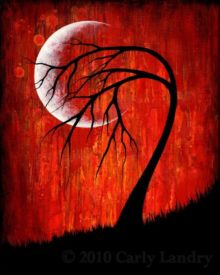 In ancient Egypt, red was associated with life, health, and victory. Egyptians would color themselves with red ochre during celebrations. Egyptian women used red ochre as a cosmetic to redden cheeks and lips, and also used henna to color their hair and paint their nails.
In ancient Egypt, red was associated with life, health, and victory. Egyptians would color themselves with red ochre during celebrations. Egyptian women used red ochre as a cosmetic to redden cheeks and lips, and also used henna to color their hair and paint their nails.
The word red is derived from the Old English rēd. The word can be further traced to the Proto-Germanic rauthaz and the Proto-Indo European root reudh-.
In Sanskrit, the word rudhira means red or blood.
In the Akkadian language of Ancient Mesopotamia and in the modern Inuit language of Eskimos, the word for red is the same word as “like blood”.
The words for colored in Latin (coloratus) and Spanish (colorado) both also mean red, whereas in Portuguese the word for red is vermelho, which comes from Latin vermiculus, meaning “little worm”.
In the Russian language, the word for red, Кра́сный (krasniy), comes from the same old Slavic root as the words for beautiful-красивый (krasiviy) and excellent-прекрасный (prekrasniy). Thus Red Square in Moscow, named long before the Russian Revolution, meant simply “Beautiful Square”.
Healthy people are often said to have a redness to their skin color (as opposed to be appearing pale). After the rise of socialism in the mid-19th century, red was used to describe revolutionary movements. The word is also obviously associated with anything of the color occupying the lower end of the visible light spectrum, such as red hair or red soil.
Red Indians is a British term for Native Americans. American terms for this ethnic group include redskin, redhead and red man, though they are not the preferred terms.
Seeing red:
The human eye sees red when it looks at light with a wavelength between 620 and 740 nanometers. Light just past this range is called infrared, or below red, and cannot be seen by human eyes, although it can be sensed as heat. Red light is used to help adapt night vision in low-light or night time, as the rod cells in the human eye are not sensitive to red.
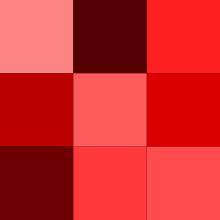 Spectral coordinates:
Spectral coordinates:
- Wavelength: 620-740 nm
- Frequency: 480-400THz
Color coordinates:
- Hex triplet: #FF0000
- RGB: (255, 0, 0)
Note: This post was compiled by Shirley Twofeathers for Color Therapy, you may repost and share without karmic repercussions, but only if you give me credit and a link back to this website. Blessed be.
Using The Color Red
“As she always did on any really important day, Penelope Hayes wore red.”
― Anna Godbersen
Wearing red:
A person may choose to wear red one day and this may indicate they are ready to take action, or they may be passionate about what they are going to do that day, or again it may mean that they are feeling angry that day, on either a conscious or subconscious level. Wear a red accent piece when you want to present yourself as bold and dynamic. It can boost your confidence if you are attending a function or interview where you feel unsure of yourself. If a woman wears a red dress it usually is associated with sex appeal.
Put red in your life when there is:
- A lack of enthusiasm and interest in life.
- A lack of energy and a feeling of over-tiredness.
- An inability to make your dreams a practical reality.
- A feeling of insecurity, unwarranted fear, or anxiety.
- Deficiencies in red and red foods show up as low energy levels, anemia, light-headedness, and lack of stamina.
Questions to ask yourself when drawn to the color red:
- Is there a need to take action now?
- What is stopping you from doing what is necessary?
Loving red:
People who love the color red act – sometimes without thinking – on immediate desires. In fact, they’re usually the poster children for immediate gratification. Sometimes people who love red are at war with themselves or others, their lives, and/or circumstances. Red is associated with passionate love, sex, great energy, impulse, action and stimulation, assertiveness and aggression, courage, strength and power, adventure, danger, warnings, revolt and revolution. Temperamental and ambitious people with a need for personal freedom.
Not loving red:
A person who has an aversion to red may be over-active, too impulsive, hot-tempered, aggressive and egocentric, or have difficulties with people with such characteristics. It can also symbolize deeply hidden fears and rejection of his own assertiveness.
Note: This post was compiled by Shirley Twofeathers for Color Therapy, you may repost and share without karmic repercussions, but only if you give me credit and a link back to this website. Blessed be.
Variations of the Color Red
“If one says ‘Red’ – the name of color – and there are fifty people listening, it can be expected that there will be fifty reds in their minds. And one can be sure that all these reds will be very different.”
~Josef Albers
Maroon: a dark bluish red, it denotes controlled and more thoughtful action. It is slightly softer than burgundy and not as dramatic as true red.
Burgundy: a dark purplish red, it is more sophisticated and serious and less energetic than true red. It indicates controlled power, determined ambition and dignified action and is often favored by the wealthy.
Crimson: has a little blue in it. It indicates a determination to succeed but without upsetting anyone else. It emits sensuality rather than sexuality.
Scarlet: has a little orange mixed with it, giving it a richness and brightness. It indicates enthusiasm and a love of life. It is a little less intense and more fun loving than true red, tempered with a degree of defiance.
Light red: represents joy, passion, sensitivity, and love.
Dark red is associated with vigor, willpower, rage, anger, leadership, courage, longing, malice, and wrath.
Reddish-brown is associated with harvest and fall.
Note: This post was compiled by Shirley Twofeathers for Color Therapy, you may repost and share without karmic repercussions, but only if you give me credit and a link back to this website. Blessed be.
Red – The Correspondences
“The ‘pure’ red of which certain abstractionists speak does not exist.
Any red is rooted in blood, glass, wine, hunters’ caps and a thousand other concrete phenomena. Otherwise we would have no feeling toward red and its relations… ” ~Robert Motherwell
Foods that work in a red way:
Red foods are generally rich in minerals and provide good sources of protein.
- Strawberries
- Raspberries
- Cherries
- Currants
- Red cabbage
- Beets
- Radishes
- Peppers
- Onions
- Tomatoes
- Parsley
- Chili peppers
- Meat
- Red wine
- Chocolate
Vitamins and minerals that work in a red way:
- Iron
- Magnesium
- Zinc
Essential Oils that are “red”:
- Rose
- Geranium
- Jasmine
Crystals and Stones:
Red gemstones can be used to strengthen the body, promote will power and courage, add vitality, overcome sexual dysfunctions. Carry or place red gemstones around your home or office to stimulate vitality and energy.
- Ruby
- Garnet
- Red Jasper
Symbolism of the color red:
- Vitality and life-force
- Fire
- The Sun
- The Direction of South
- Blood
- Good luck and prosperity
- Power and authority
- Masculine energy
- War and anger
- Passion
- Energy
- Sexuality
Note: This post was compiled by Shirley Twofeathers for Color Therapy, you may repost and share without karmic repercussions, but only if you give me credit and a link back to this website. Blessed be.
Healing With The Color Red
“As soon as I turned the key I saw it hanging, the color of fire and sunset. the colour of flamboyant flowers. ‘If you are buried under a flamboyant tree, ‘ I said, ‘your soul is lifted up when it flowers. Everyone wants that.’
― Jean Rhys
Overview:
Red is associated with the root chakra. It promotes vitality, strength, sexuality, willpower, and alertness. Red is used to counteract anemia, lack of energy, impotence, and low blood pressure. Its complement is turquoise.
Red stimulates the sensory nerves. It is beneficial in deficiencies of smell, sight, hearing, taste and touch. Red activates the circulation of the blood, excites the cerebro-spinal fluid and sympathetic nervous systems. Red is good for the muscular system and the left cerebral brain hemisphere. It is excellent for contracted muscles. Red builds the hemoglobin. It energizes the liver.
Red rays decompose the salt crystals in the body and act as a catalyst for ionization. Red is particularly useful in the absorption of iron into the body.
Red affects the circulatory system and sexuality. It stimulates the overall energy levels of the metabolism, lower extremities and most blood conditions. Red is a stimulating color. It will energize the root chakra. It warms and it activates. It awakens our physical life force.
Red strengthens the physical energy and the will of the individual. It can stimulate deeper passions, whether they be of sex and love, courage, hatred or even revenge. Red is useful in the management of stress. It also plays a key role in the health of the individual – physically, mentally, emotionally, and spiritually
Healing with the color red:
- It can be used with other treatment for reducing cancers.
- For cauterizing wounds, drying up weeping sores, healing wounds, diseases of the blood and circulation.
- Red will warm cold areas and can reduce pain.
- Red can be used for colds, poor circulation, anemia, and mucus ailments.
- It can help with depression.
- Anemia, poor circulation, increasing vitality.
- Red links with and stimulates the root chakra, at the base of the spine, causing the adrenal glands to release Adrenalin. This results in greater strength.
- Red causes hemoglobin to multiply, thus increasing energy and raising body temperature. It is excellent for anemia and blood-related conditions.
- It loosens, opens up clogs, releases stiffness and constrictions. It is excellent for areas that have become stiffened or constricted.
Contra-indications:
- Sometimes red will cause an intensification of pain in sensitive people, a sort of “color burn.”
- It can stimulate quick decisions or rash actions.
- Red is not normally used on people with high blood pressure or anxiety.
- Is not to be used for fresh burns or when bleeding is a problem.
- Over exposure can make you agitated or even aggressive.
- Avoid red in most cases of insanity and emotional disturbances.
- Can elevate blood pressure and respiratory rates.
- Excessive use of red will produce fever and exhaustion. It promotes hostility, anger, violence.
- Too much red can over-stimulate and aggravate certain conditions.
- High blood pressure is an indication of too much red energy within the system.
It is recommended that red be used in conjunction with blue rays. Red is balanced by the color green.
Note: This post was compiled by Shirley Twofeathers for Color Therapy, you may repost and share without karmic repercussions, but only if you give me credit and a link back to this website. Blessed be.
The Color Red
“Red is the color of life. It’s blood, passion, rage. It’s menstrual flow and after birth. Beginnings and violent end. Red is the color of love. Beating hearts and hungry lips. Roses, Valentines, cherries. Red is the color of shame. Crimson cheeks and spilled blood. Broken hearts, opened veins. A burning desire to return to white.”
― Mary Hogan, Pretty Face
One of the three primary colors, bright red pops out of whatever environment it happens to be in and grabs our attention more than any other color. Moreover, it is the first actual color that is seen by babies. Because it has a lower vibrational frequency than any other color in our visible spectrum, it is associated with the base chakra and symbolizes passion, sexuality, fertility, and animal urges.
Red is thought of as an immediate color. This affects the thinking processes, causing restlessness and impatience.
The effect of red on the eye is quite unusual. For the color to be seen, the eye itself makes internal adjustments. This alteration means that we see red objects as closer than they really are.
Red is the color of blood, rubies and strawberries. This primal color is associated with danger, sacrifice, passion, fire, beauty, blood, anger, Christmas, socialism, communism, and in China and many other cultures, with happiness. Red is the color of blood, which means that it is associated with the life-force and vitality. Red is the most physical active color, a color of personal self-hood (I AM), red is a color of will. It supports survival and leadership.
Wearing red, eating red foods and surrounding yourself with red increases the body’s ability to absorb iron, the metal that is responsible for the color of hemoglobin in the blood. The presence of hemoglobin allows the blood to absorb oxygen in the lungs and to transport that life-giving oxygen to the cells of the body.
Red light increases blood pressure, pulse rate, and breathing rate. Psychological research has shown that men find women who are wearing red more attractive. Bright red rooms often make people anxious. Rooms with a red toned accent can influence people to lose track of time, this is one reason why red is often used in bars and casinos. Restaurants often use red as a decorating scheme because it stimulates the appetite.
Red is the color of passion, anger, and high blood pressure. Red is a primal color. It represents primal urges, like lust (we call certain areas red-light districts for a reason) and fury (you know the phrase “seeing red,” right?). Yes, red is a commanding color: think of how stop signs get you to halt in your tracks and how you stand back when a red fire engine goes whizzing by.
Note: This post was compiled by Shirley Twofeathers for Color Therapy, you may repost and share without karmic repercussions, but only if you give me credit and a link back to this website. Blessed be.
